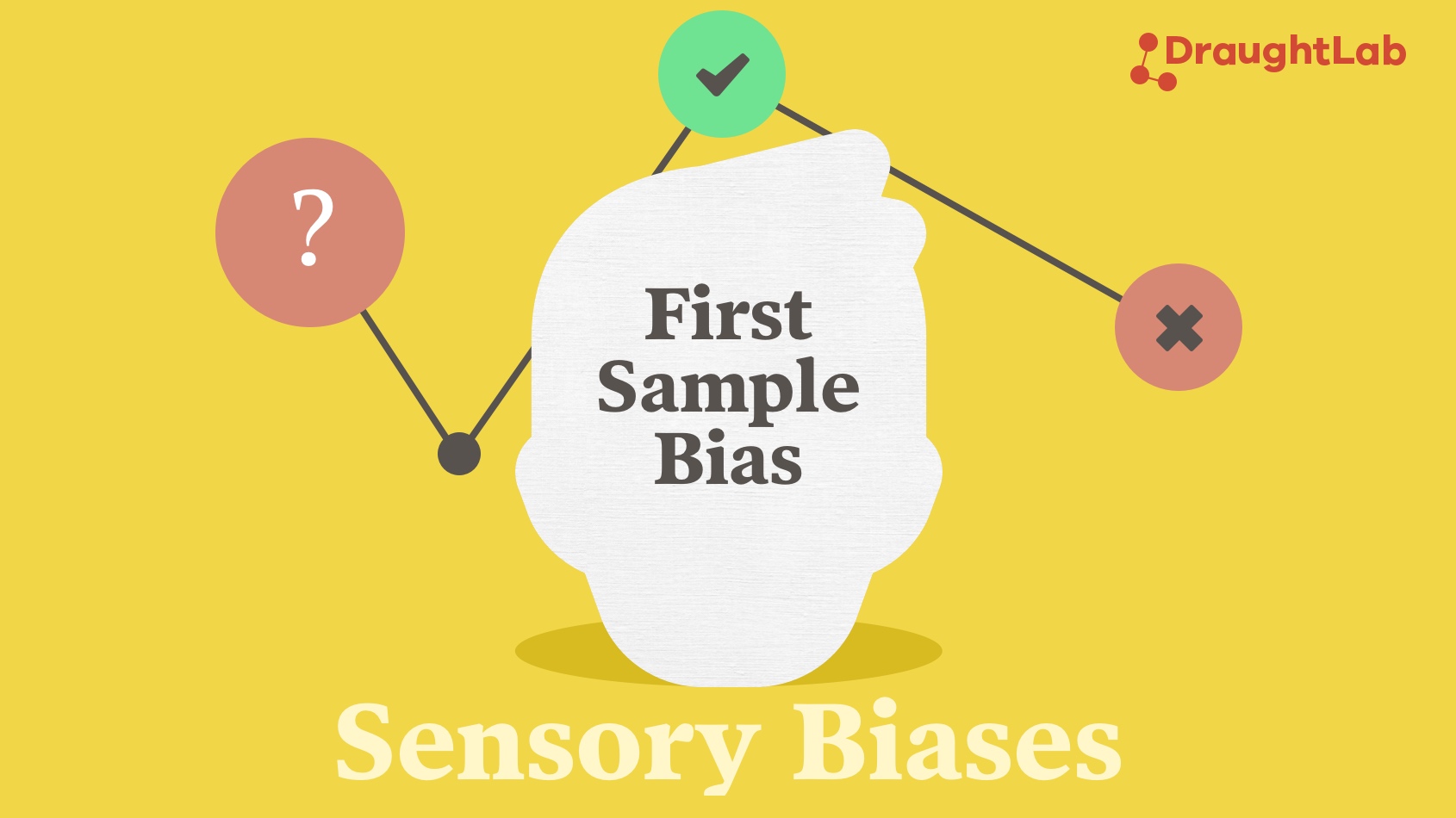
There’s a reason why that first sip of coffee hits different in the morning. After our palates have had a period of rest, we experience flavor more intensely and tend to have a stronger taste response. This is called First Sample Bias, and it will have the greatest impact when we taste things that are very similar and/or when we need to detect subtle flavor differences.
For example, we have no problem determining our level of overall liking between a hotdog, a burrito, and a blueberry muffin. But when asked how much we like different types of blueberry muffins, the task becomes more difficult and subject to bias.
In the sensory science world, First Sample bias is classified as a Positional Bias, which according to the Society of Sensory Professionals, is defined as any “bias occurring as a function of the evaluation of stimuli in the first, second, or third, etc. place or position.”
A bit of a mouthful, but it means that it can impact the outcome of your tasting results, so it’s important to plan for. Luckily, there are some strategies to minimize its effect.
Strategy #1: Calibration Samples
The simplest way to diminish First Sample Bias is to introduce a calibration sample. This means providing panelists a similarly flavored product before starting their evaluations, which will act as a ‘warm up’ to get their palate used to tasting.
It’s simple, effective, and something that most programs can do right away.
Strategy #2: Randomization
The more traditional sensory approach to this problem is sample randomization. This means presenting samples in a different (randomized) order to each panelist so that the effects of first sample bias are equally spread out.
Ideally, each sample would appear in every position (1st, 2nd … nth) an equal number of times to achieve the best results, but we often see less rigorous randomization approaches depending on the needs of the study.
Although this is the most effective method, the effort required to administer randomization can be high for some programs, so evaluating the cost-benefit of this approach should be done.
Note: DraughtLab has randomization built into its software at the Enterprise Tier
Knowledge is Power
Simply being aware of this bias can help you combat its effects. For example, if you get a questionable result, switching up the randomization order is a good way to verify the outcome.
Deciding for your Program
It can be tough to mitigate bias on panel and decide which strategies are right for your program. If you have any questions, or need some help with a tough problem, sign up for one of our office hours slots. It’s free!
DraughtLab offers practical and approachable Sensory Analysis Solutions that deliver real-world value to food and beverage companies. Visit our website or reach out to us at info@draughtlab.com to learn more!